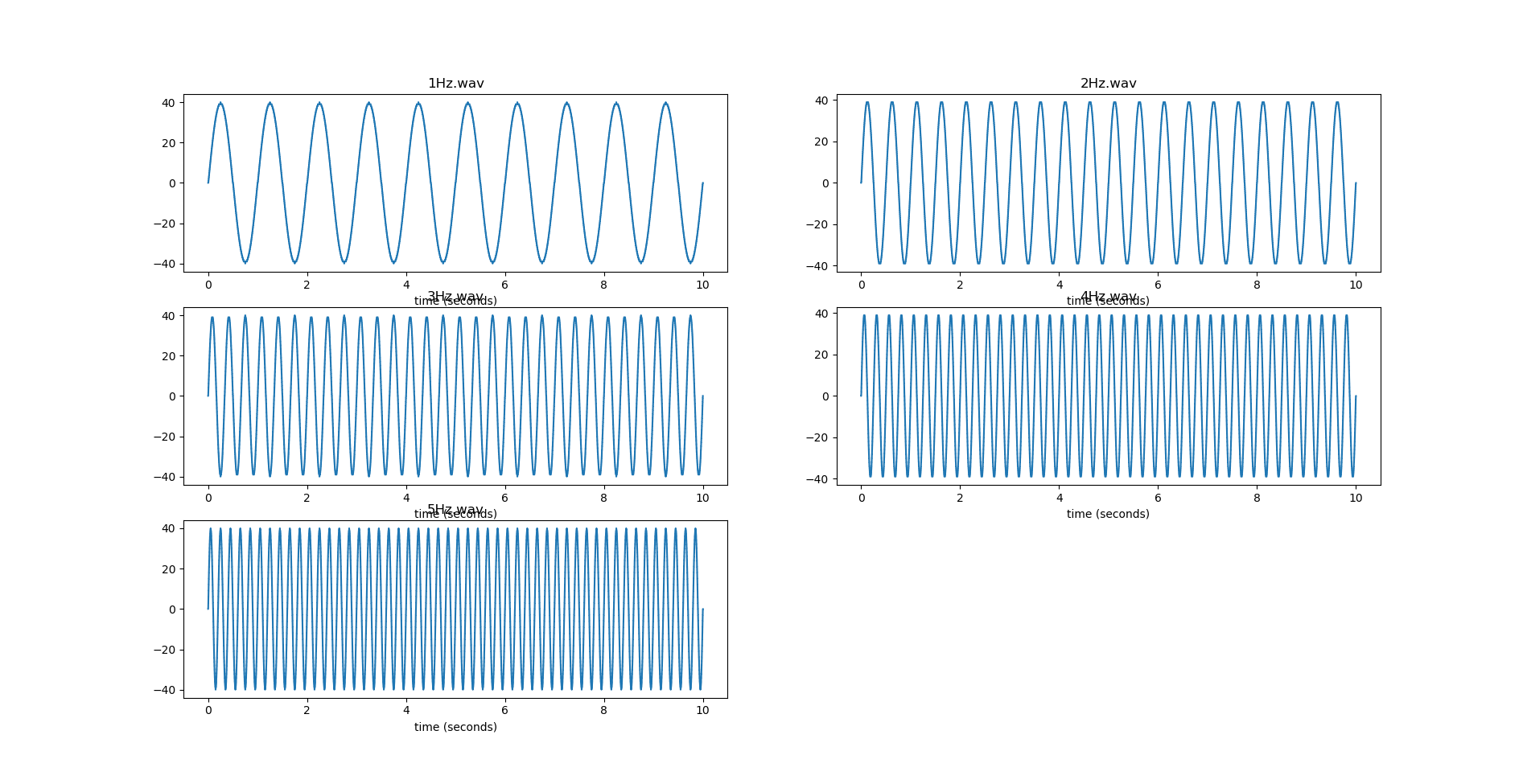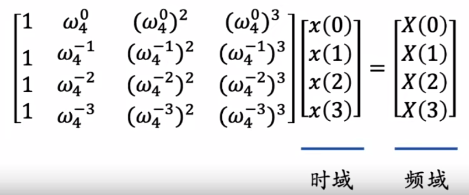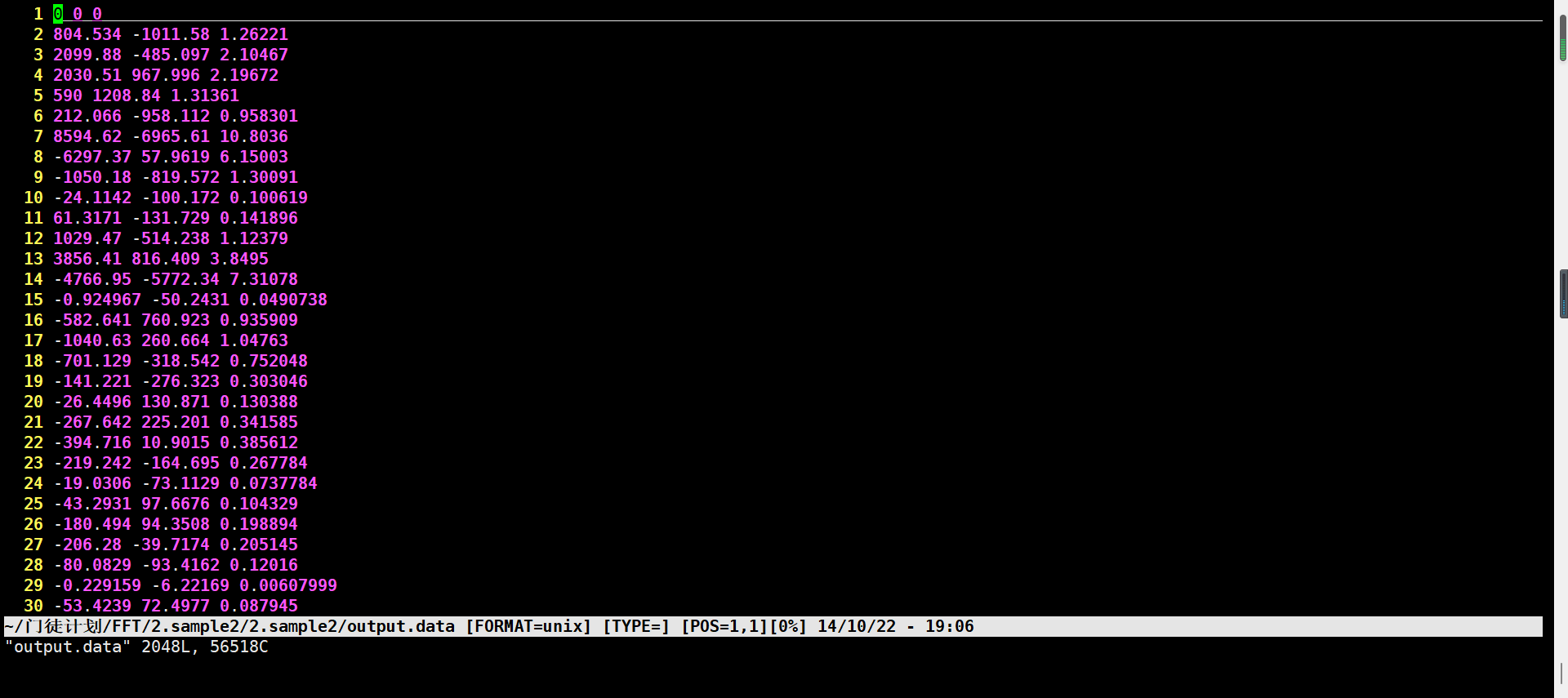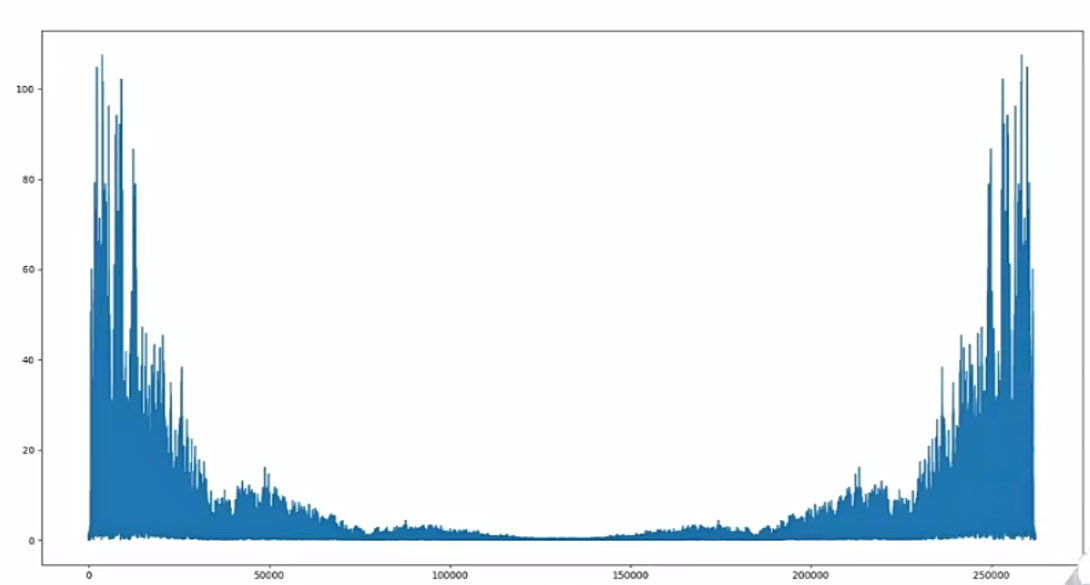DFT音频还原及降噪实战
傅里叶变换与信息隐写术(二)
声音数据
? 声音可以用连续的波形来表示
? 声音在计算机中的存储是离散的
? 计算机中存储的是声音的几个采样点的数据,1 秒钟采样 5 个点就表示采样频率是 5 Hz(每隔 0.25 秒取一个点,注意第 0 秒也取)
? 采样频率越高,听到的声音就越平滑、越连续
? 比如这段1Hz的音频采样频率为16.1kHz,就意味着它在这份文件中1 秒钟存储了 16100 个数据点。
? 
? 以下代码可以用于生成一段音频
#!/usr/bin/env python
# coding=utf-8
import wave
import numpy as np
frameRate = 16100 # 将采样率设置为1.61kHz
time = 10 # 要输出的声音文件的时间长度
volumn = 40 # 声音文件最大大小
pi = np.pi # 用于表示正弦波
t = np.arange(0, time, 1.0 / frameRate) # 需要在哪些点上进行取样
def gen_wave_data(fileName, realF):
wave_data = volumn * np.sin(2.0 * pi * realF * t); # 2pi*真实频率*总时长
wave_data = wave_data.astype(np.int8)
f = wave.open(fileName, "wb")
f.setnchannels(1) # 声道数,可以理解为立体度
f.setsampwidth(1) # 采样位宽,表示多少个字节表示一个数据点(1字节:0-256 2字节:0-65535),可以理解为分辨率
f.setframerate(frameRate) # 多少数据代表1秒的音频
f.writeframes(wave_data.tostring()) # 把声音数据写到文件中
f.close()
print("write data to : " + fileName)
gen_wave_data("1Hz.wav", 1)
gen_wave_data("2Hz.wav", 2)
gen_wave_data("3Hz.wav", 3)
gen_wave_data("4Hz.wav", 4)
gen_wave_data("5Hz.wav", 5)
运行结果如下图所示

接着,我们可以尝试用代码对我们生成的音频进行绘图,完整代码如下
#!/usr/bin/env python
# coding=utf-8
import wave
import matplotlib
matplotlib.use("TkAgg")
import matplotlib.pyplot as pl
import numpy as np
def draw_wave_data(fileName, plotNum):
f = wave.open(fileName, "rb")
params = f.getparams() # 参数params在下面有解释
str_data = f.readframes(params[3]) # 将所有数据以字符串形式读出
f.close()
wave_data = np.fromstring(str_data, dtype = np.int8) # 将字符串数据转换成数值数据
t = np.arange(0, len(wave_data) * 1.0 / params[2], 1.0 / params[2]) # ;总时间 = 总数据量 / 一个分段的数据量;步长 = 1 / 频率
pl.subplot(plotNum)
pl.title(fileName)
pl.plot(t, wave_data)
pl.xlabel("time (seconds)")
draw_wave_data("1Hz.wav", 321)
draw_wave_data("2Hz.wav", 322)
draw_wave_data("3Hz.wav", 323)
draw_wave_data("4Hz.wav", 324)
draw_wave_data("5Hz.wav", 325)
pl.show()
打印参数 params 的内容,结果如下图所示。很明显,前四个参数就是我们之前设置的参数:单声道、1 位宽、采样频率、总时长(总数据量)。
最后运行结果如下

离散傅里叶变换 DFT
? 离散傅里叶变换主要用于信号分解,给一个合成得到的波形,DFT 可以将其中包含的多种不同频率的波形区分出来。公式(1)如下图所示,其中 x(n) 表示第 n 个声音信号,e 项表示 m 种频率,X(m) 表示第 m 种频率的分析结果。
X
(
m
)
=
∑
n
=
0
N
?
1
x
(
n
)
?
e
?
j
2
π
m
n
/
N
(1)
X(m)=\sum_{n=0}^{N-1}x(n)*e^{-j2\pi mn/N} \tag{1}
X(m)=n=0∑N?1?x(n)?e?j2πmn/N(1)
? 上述公式可以理解为,通过上式计算,如果声音数据 x 中包含了第 m 种频率的信号,则 X(m) 会给出第 m 种频率的分析结果(振幅、俯角)。
? 其中,x 为时域, X 为频域,声音信号是按时间顺序给出,根据 DFT 计算后,声音信号按频率划分。因此,DFT 本质上是实现了时域到频域的转换。
? 至于 e 项的含义,有以下补充性质
e
j
2
π
m
n
/
N
=
ω
n
k
=
cos
?
(
2
π
k
n
)
+
sin
?
(
2
π
k
n
)
i
e
?
j
2
π
m
n
/
N
=
ω
n
?
k
=
cos
?
(
2
π
k
n
)
?
sin
?
(
2
π
k
n
)
i
e^{j2\pi mn/N}=\omega_n^k=\cos(\frac{2\pi k}{n})+\sin(\frac{2\pi k}{n})i \\ e^{-j2\pi mn/N}=\omega_n^{-k}=\cos(\frac{2\pi k}{n})-\sin(\frac{2\pi k}{n})i
ej2πmn/N=ωnk?=cos(n2πk?)+sin(n2πk?)ie?j2πmn/N=ωn?k?=cos(n2πk?)?sin(n2πk?)i
? 从而,我们上面的公式(1)可以变换为
X
(
m
)
=
∑
n
=
0
N
?
1
x
(
n
)
?
ω
N
?
n
m
X
(
m
)
=
∑
n
=
0
N
?
1
x
(
n
)
?
(
ω
N
?
m
)
n
(2)
X(m)=\sum_{n=0}^{N-1}x(n)*\omega_N^{-nm} \tag{2} \\ X(m)=\sum_{n=0}^{N-1}x(n)*{(\omega_N^{-m})}^n
X(m)=n=0∑N?1?x(n)?ωN?nm?X(m)=n=0∑N?1?x(n)?(ωN?m?)n(2)
? 进一步,上式可以表示为矩阵乘法的形式

实战1 :声音还原

? 首先读取要分析的文件
#!/usr/bin/env python
# coding=utf-8
import wave
import numpy as np
f = wave.open("secret.wav", "rb")
params = f.getparams() # 读取参数
str_data = f.readframes(params[3])
f.close()
wave_data = np.fromstring(str_data, dtype = np.int8)
output_fileName = "input.data"
fout = open(output_fileName, "w")
fout.write(str(params[3]) + "\n")
for x in wave_data:
fout.write(str(x) + "\n")
fout.close()
print("write wave to : " + output_fileName)
? 最后的效果是得到了 161000 个数值,存入 input.data中去(也可以侧面看出 secret.wav 是一段 10 秒的音频)
? 接下来实现一下 DFT 算法,大部分都可以照搬 FFT 的代码,只不过对照(2)式的矩阵乘法表示可以看出这里使用的是逆运算,因此稍作修改
#include <iostream>
#include <cstdio>
#include <cstdlib>
#include <queue>
#include <stack>
#include <algorithm>
#include <string>
#include <map>
#include <set>
#include <vector>
#include <math.h>
using namespace std;
class Complex {
public :
Complex(double r = 0.0, double i = 0.0) : r(r), i(i) {}
Complex &operator*=(const Complex &rhl) {
double a = r, b = i, c = rhl.r, d = rhl.i;
r = a * c - b * d;
i = a * d + b * c;
return *this;
}
double m() { return sqrt(r * r + i * i); } # 求复数模值
Complex operator*(const Complex &rhl) const {
Complex ret(*this);
ret *= rhl;
return ret;
}
Complex &operator+=(const Complex &rhl) {
r += rhl.r;
i += rhl.i;
return *this;
}
Complex operator+(const Complex &rhl) const {
Complex ret(*this);
ret += rhl;
return ret;
}
Complex &operator-=(const Complex &rhl) {
r -= rhl.r;
i -= rhl.i;
return *this;
}
Complex operator-(const Complex &rhl) const {
Complex ret(*this);
ret -= rhl;
return ret;
}
Complex &operator/=(const double x) {
r /= x;
i /= x;
return *this;
}
Complex operator/(const double x) const {
Complex ret(*this);
ret /= x;
return ret;
}
double r, i;
};
ostream &operator<<(ostream &out, const Complex &a) {
out << a.r << "+" << a.i << "i";
return out;
}
struct FastFourierTransform {
#define PI acos(-1)
void __transform(vector<Complex> &a, int n, int type = 1) {
if (n == 1) { return ; }
int m = n / 2;
vector<Complex> a1(m), a2(m);
for (int i = 0; i < m; i++) a1[i] = a[i << 1], a2[i] = a[i << 1 | 1];
__transform(a1, m, type);
__transform(a2, m, type);
Complex wn(1, 0), w1(cos(2.0 * PI / n), type * sin(2.0 * PI / n));
for (int i = 0; i < m; i++) {
a[i] = a1[i] + wn * a2[i];
a[i + m] = a1[i] - wn * a2[i];
wn *= w1;
}
return ;
}
vector<Complex> dft(vector<Complex> &a, int n) {
vector<Complex> temp(n);
for (int i = 0, m = a.size(); i < m; i++) temp[i] = a[i];
__transform(temp, n, -1); # 面对正向变换,type置-1(w_n^{-k})
return temp;
}
vector<Complex> idft(vector<Complex> &a, int n) {
vector<Complex> temp(n);
for (int i = 0, m = a.size(); i < m; i++) temp[i] = a[i];
__transform(temp, n); # 面对逆向变换,type置1(w_n^k)
for (int i = 0; i < n; i++) temp[i] /= n;
return temp;
}
#undef PI
} fft;
int main() {
int n, N = 1;
cin >> n;
n /= 100;
vector<Complex> x(n); # 表示时域信号,一共有n项
for (int i = 0; i < n; i++) cin >> x[i].r; # 读入时域信号的值
while (N < n) N <<= 1; # N是2的整数次方
vector<Complex> X = fft.dft(x, N); # 离散傅里叶变换,变换为频域信号
for (int i = 0; i < N; i++) {
cout << X[i].r << " " << X[i].i << " ";
cout << X[i].m() * 2.0 / N << endl; # X的模值(实部平方加虚部平方开根号),即复平面上线段长度
}
return 0;
}
运行结果如下,这就是离散傅里叶的分析结果


? 现在分析结果不太直观,我们用程序将它画进图里
#!/usr/bin/env python
# coding=utf-8
import wave
import matplotlib
matplotlib.use("Agg")
import matplotlib.pyplot as pl
import numpy as np
def draw_wave_data(x, y, plotNum, title):
pl.subplot(plotNum)
pl.title(title)
pl.plot(x, y)
fin = open("output.data", "r")
data = [x.split(" ") for x in fin.read().strip().split("\n")]
data = np.array(data)
data = data.T
x = np.arange(0, len(data[0]))
draw_wave_data(x, data[0], 221, "Real part")
draw_wave_data(x, data[1], 222, "Imag part")
draw_wave_data(x, data[2], 223, "Mag")
pl.show()
运行结果如下图所示

从结果可以看出以下信息

实战2 :声音降噪
? 下图是经傅里叶变换后的声音,表示每一种频域的振幅(对称,越接近中间越是高频信号)

? 噪音:声音比较小,频率比较高
? 过滤所有高频信号,然后将频域写回时域
// 将上面dft.cpp的main函数部分进行如下改动
int main() {
int n, N = 1;
cin >> n;
vector<Complex> x1(n);
for (int i = 0; i < n; i++) cin >> x1[i].r;
while (N < n) N <<= 1;
vector<Complex> X = fft.dft(x1, N); // X中存储的是经傅里叶变换后的频域数据
for (int k = N / 4, i = N / 2 - k, I = N / 2 + k; i < I; i++) X[i].clear(); // 我们删除中间n/4+n/4=n/2的数据
vector<Complex> x2 = fft.idft(X, N); // 将频域数据写回时域
for (int i = 0; i < n; i++) cout << int(x2[i].r) << endl;
return 0;
}

X = fft.dft(x1, N); // X中存储的是经傅里叶变换后的频域数据
for (int k = N / 4, i = N / 2 - k, I = N / 2 + k; i < I; i++) X[i].clear(); // 我们删除中间n/4+n/4=n/2的数据
vector x2 = fft.idft(X, N); // 将频域数据写回时域
for (int i = 0; i < n; i++) cout << int(x2[i].r) << endl;
return 0;
}
[外链图片转存中...(img-DEgV0c6L-1702784603248)]
本文来自互联网用户投稿,该文观点仅代表作者本人,不代表本站立场。本站仅提供信息存储空间服务,不拥有所有权,不承担相关法律责任。 如若内容造成侵权/违法违规/事实不符,请联系我的编程经验分享网邮箱:chenni525@qq.com进行投诉反馈,一经查实,立即删除!
- Python教程
- 深入理解 MySQL 中的 HAVING 关键字和聚合函数
- Qt之QChar编码(1)
- MyBatis入门基础篇
- 用Python脚本实现FFmpeg批量转换
- 工业富联成为英伟达AI服务器芯片基板最大供应商 | 百能云芯
- MongDB之整合SpringBoot
- 《WebKit 技术内幕》之三(3): WebKit 架构和模块
- JAVA语言—AOP基础
- WebGL在医学可视化的应用
- SpringBoot 创建定时任务(配合数据库动态执行)
- 迅为RK3568开发板使用OpenCV处理图像(颜色转换)
- 基于ssm的校园预点餐系统(有报告)。Javaee项目。ssm项目。
- 十一、常用API——Object的clone()
- 人工智能中GAN 的五大有趣应用